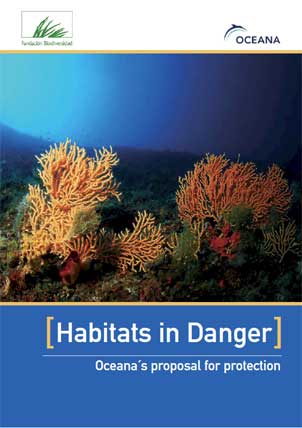Report | April 30, 2010
Habitas in danger: Oceana’s proposal for protection
A collaboration agreement that was establishment through the Research and Projects Department of the Fundación Biodiversidad has given Oceana the opportunity to demonstrate new criteria in support of the selection of marine habitats of interest to the European Community. The context of the project is included within our mission and exclusive dedication to researching, protecting and recuperating the oceans through investigation and scientific work, with a focus on biodiversity, the environment and sustainable marine development.
As part of a general diagnosis, the most environmentally important habitats have been identified in this report according to their unique qualities and biological and biogeographical interest. The following chapters detail research results and include proposals for representative types of natural habitats of interest to the European Community. Although the process of obtaining the data has been long and laborious, we have attempted to include extensive lists of taxonomic classifications that describe the communities associated with the identified habitats. Obviously, the lack of consistent data means priorities should be established, as a point of departure, for the development and implementation of action plans for the protection of these habitats.
It is necessary to promote a model for sustainable development that values and conserves natural resources, in order to promote the development and consolidation of a coherent network of special conservation areas within the European Union. In both aspects, the development of the proposal stems from the lack of a coherent representation of marine habitats of interest to the community, as well as from the need to urgently update this information. These points specifically refer to the Habitats Directive 92/43/CEE, which is the European Community’s fundamental legislative instrument for halting the decline of biodiversity, specifically in the marine environment, with regards to its framework for application.


